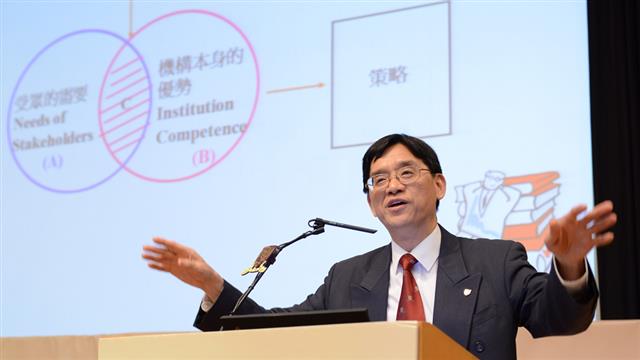'The promotion of a brand can't rely only on advertising. If the quality of the product is not up to par, large spending on advertisement will only expose and spread its inadequacy far and wide so that it will die a quick death,' warned Prof. Andrew C.F. Chan, professor in the Department of Marketing and director of the EMBA programme, in the fourth CUHK 50th Anniversary Public Lecture entitled, 'Strategies for Building Successful Brand Image', held at the Hong Kong Central Library on 27 July.
Professor Chan shared with about 200 participants his views on brand image building. Based on his experience and research, he pointed out that it was very important to identify the needs of target buyers and the strengths and weaknesses of the product, with a view to improving the product or finding a suitable market for it.
Professor Chan also briefed the audience on the left-right circle theory first developed by him in 1992. Put simply, the left circle represents the needs of the buyers while the right one represents the edge of the company or the product. The overlapping area of the two circles represents the degree to which the company or product could satisfy buyers. Other factors such as the emergence of competitors, changes in the market and any product improvement would affect how the two circles interact. For instance the CUHK EMBA programme. It pioneered in Hong Kong in 2003, and in order to distinguish itself among others in executive education, Professor Chan did much work in surveying potential clients' opinions, enhancing the curriculum in terms of practicality, inviting experienced practitioners and introducing elements such as leadership training and overseas exchange tours. Now, the CUHK EMBA is a well-recognized programme reaching No. 17 in global ranking.
A participant asked whether customers needs could be created, e.g., those who do not buy mooncakes change their minds when mooncakes receive celebrity endorsement. Professor Chan replied firmly that needs could not be created this way but they could be shifted. He explained, those who did not take to mooncakes might still buy them for their relatives and friends at the Mid-autumn Festival. What they bought was not so much the cakes themselves but the meaning behind it—care, respect and gratitude.
For details, please click here.



